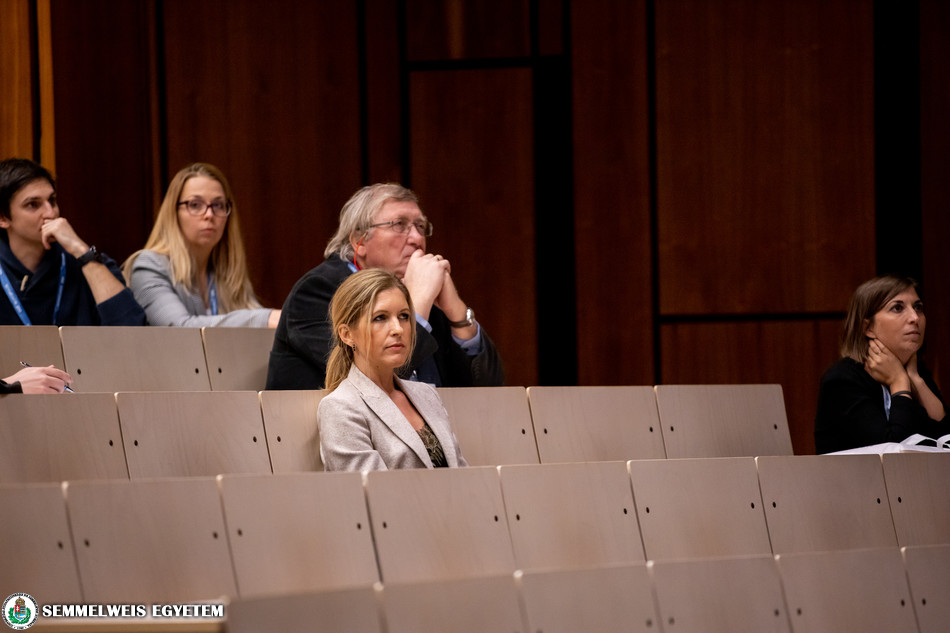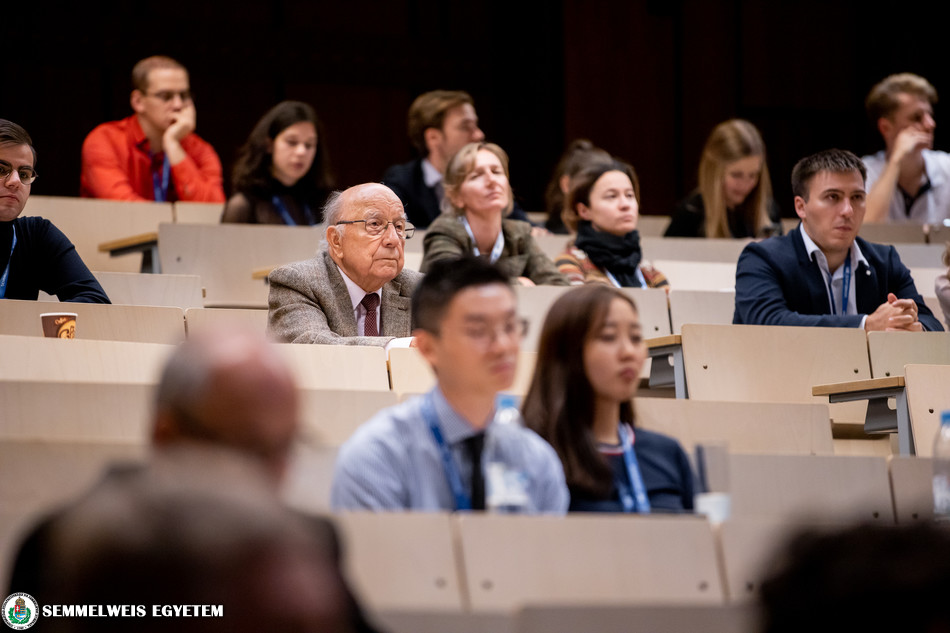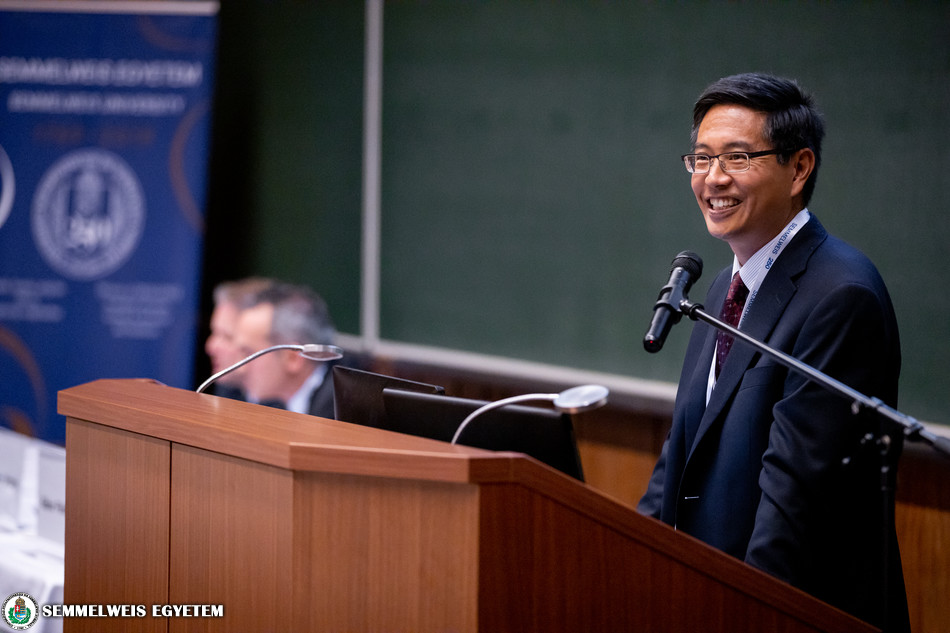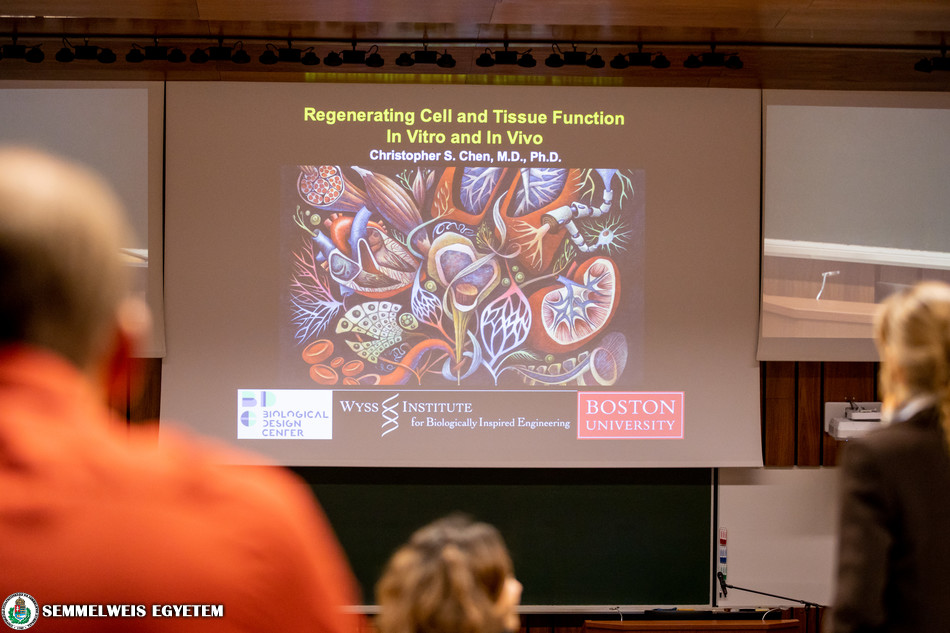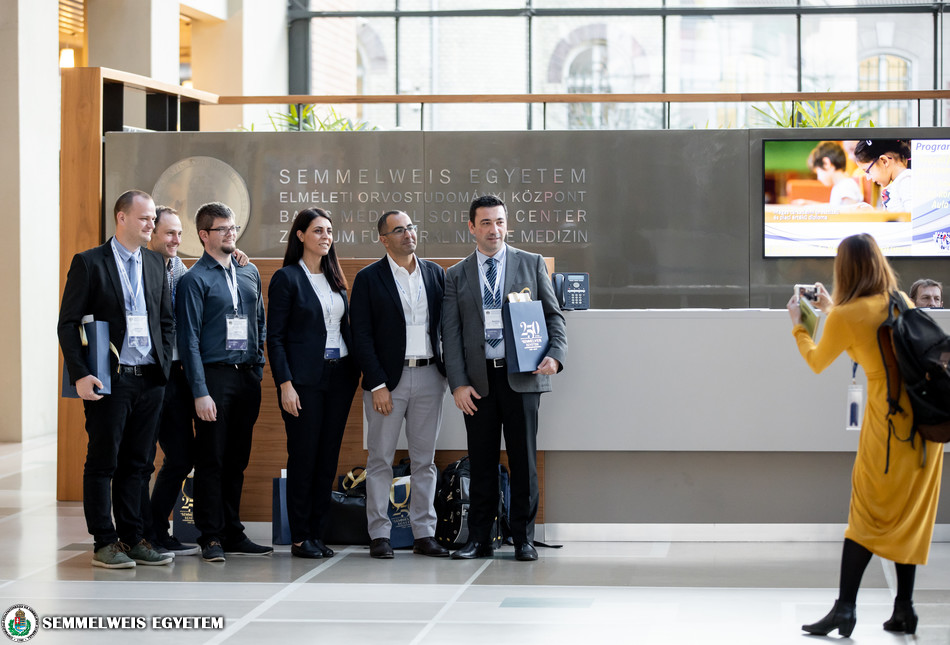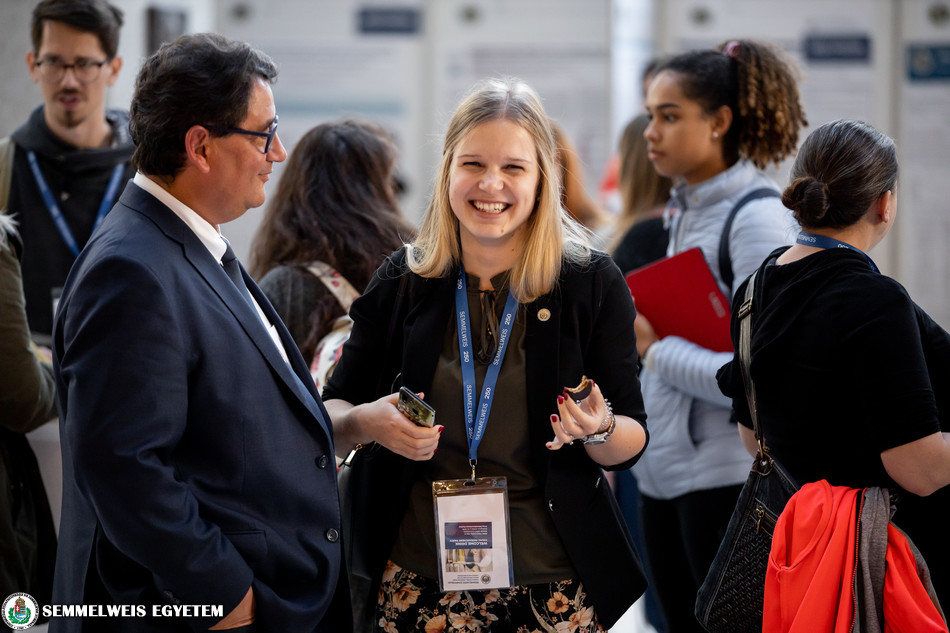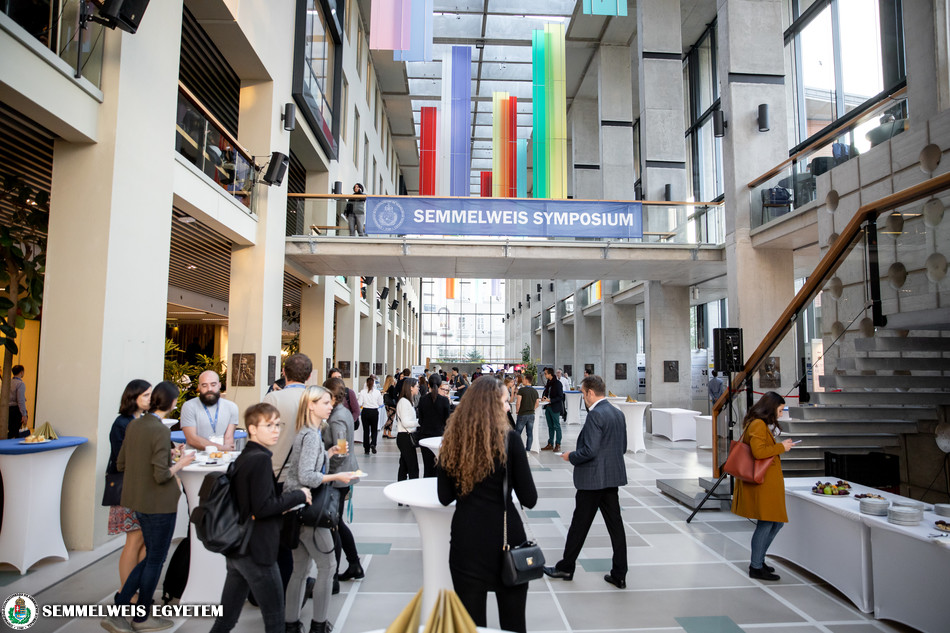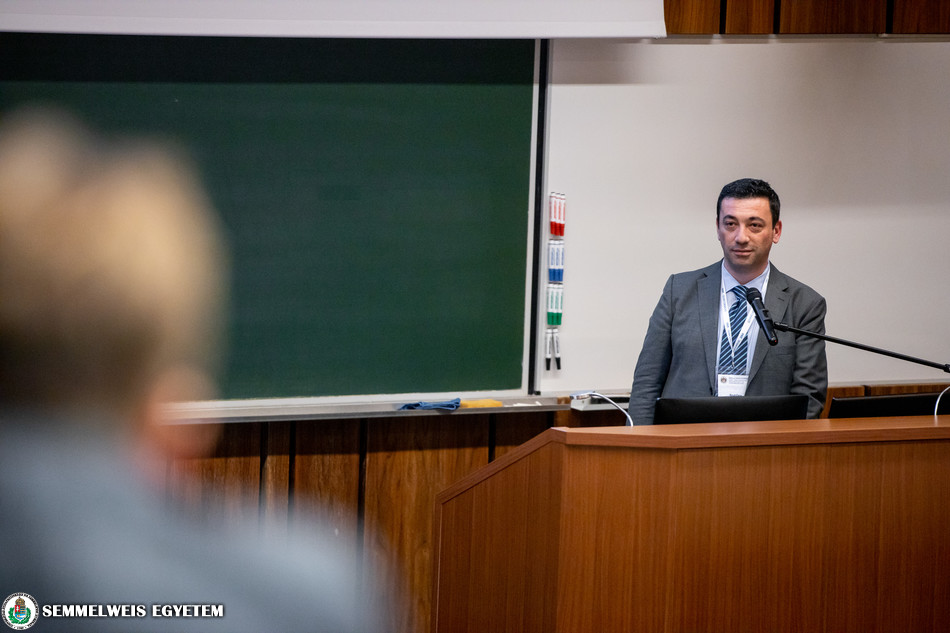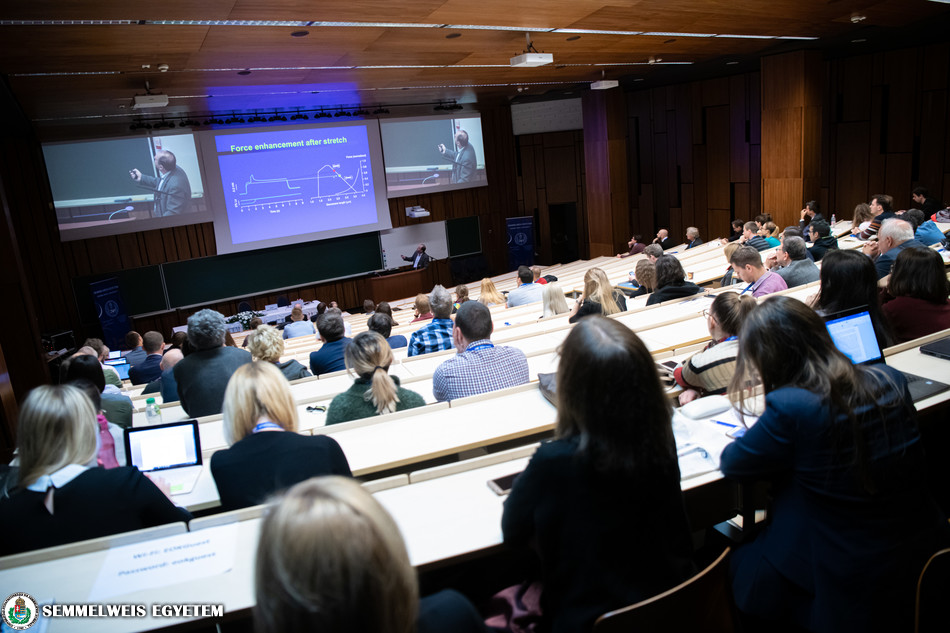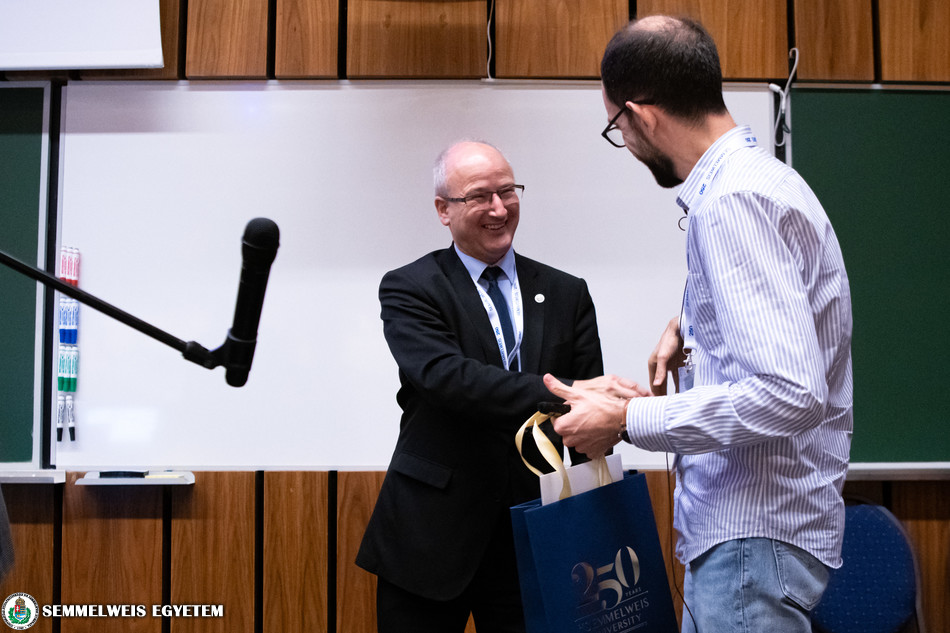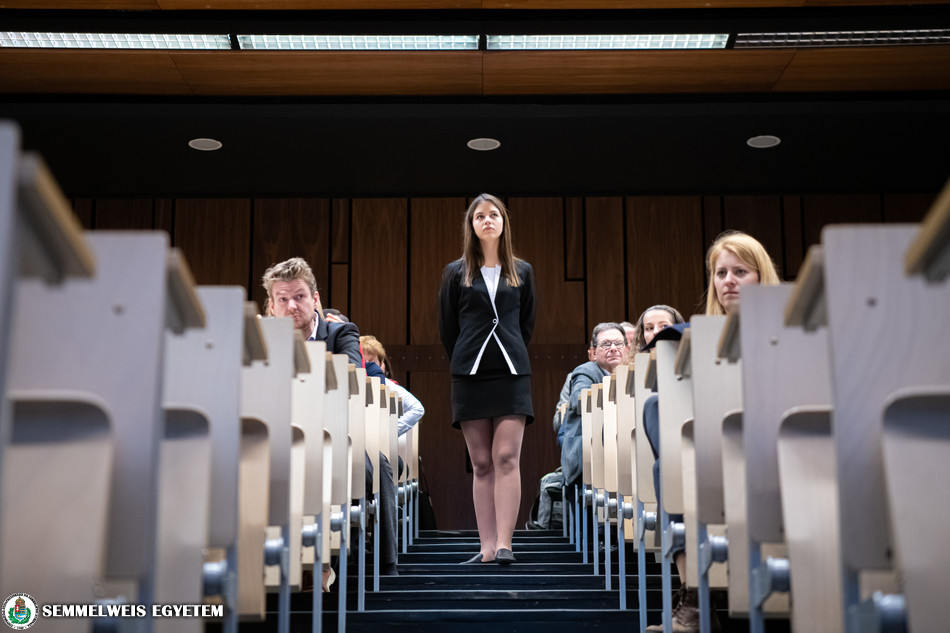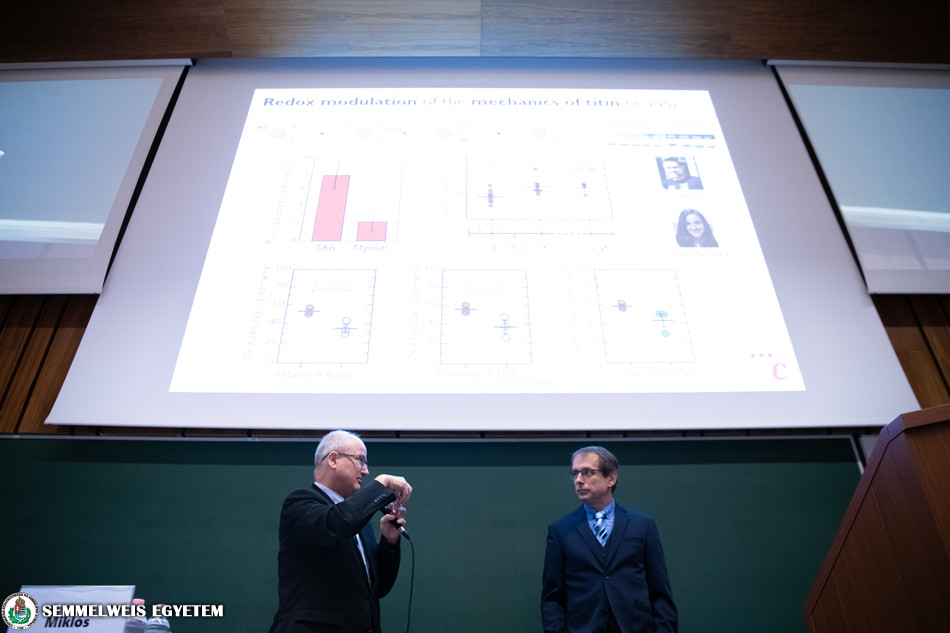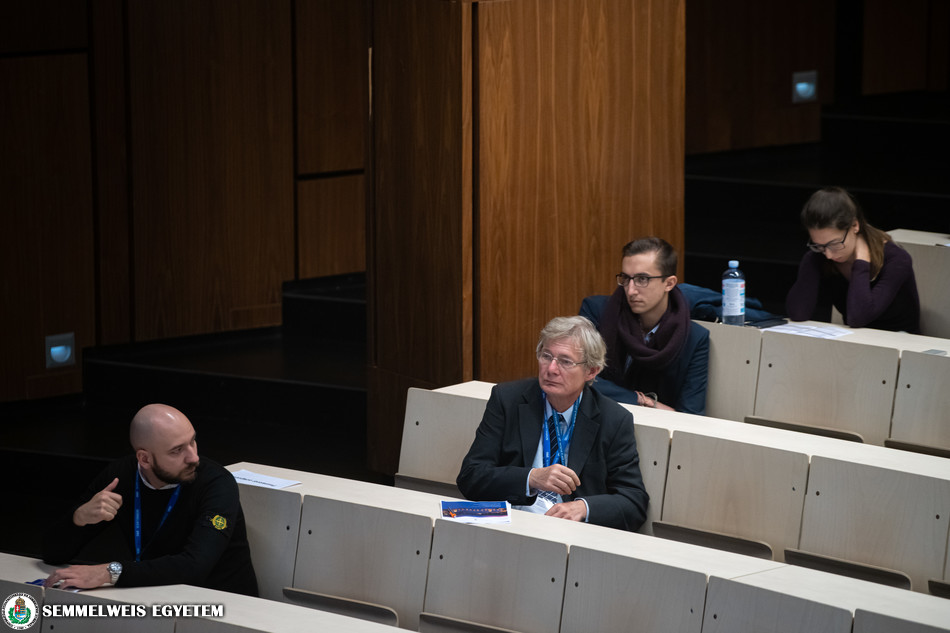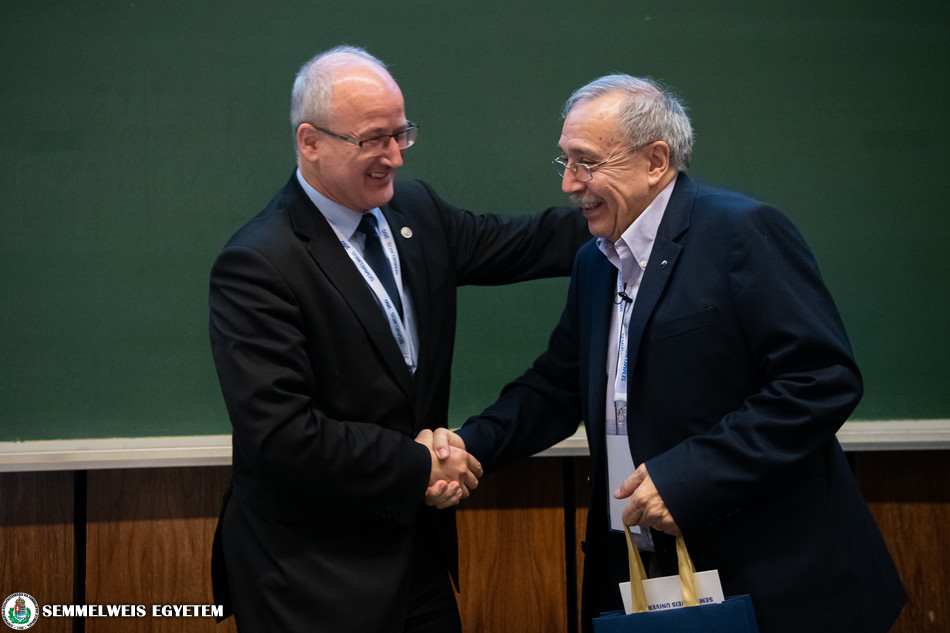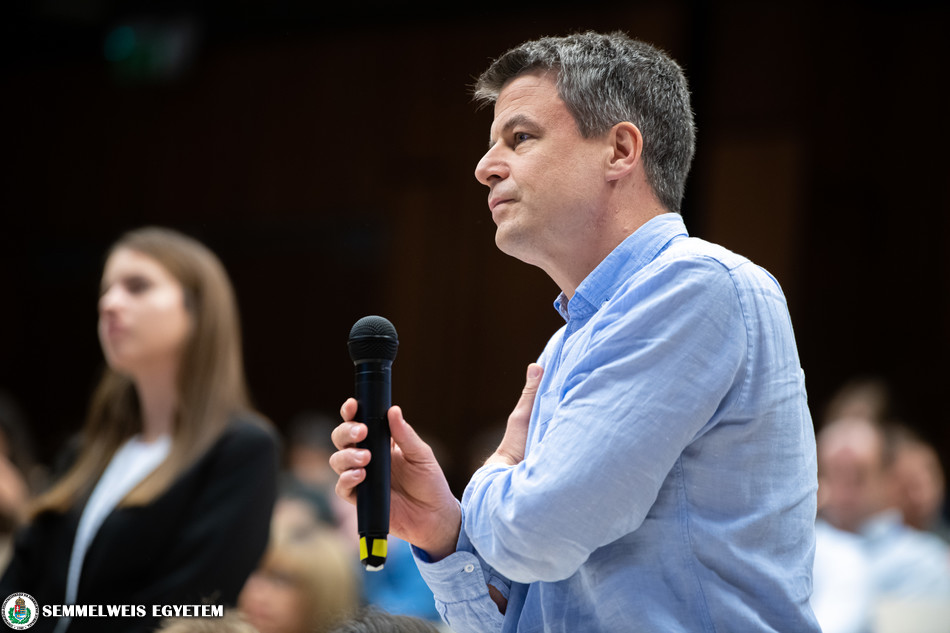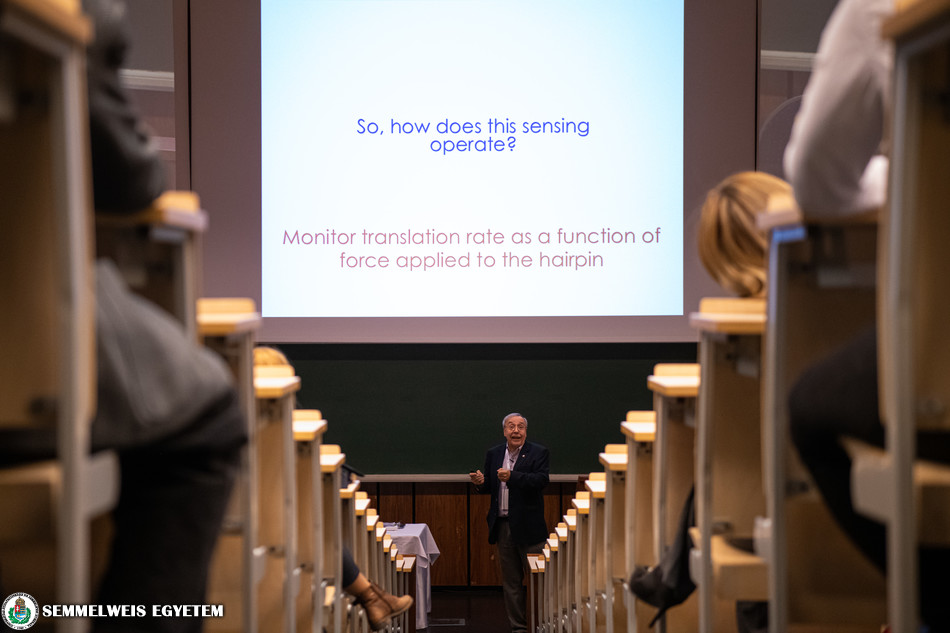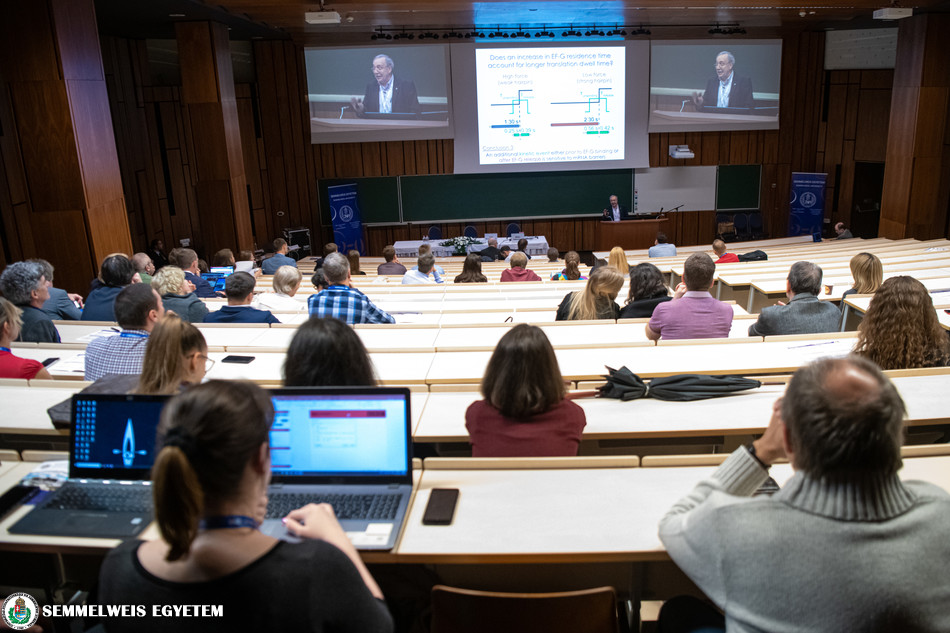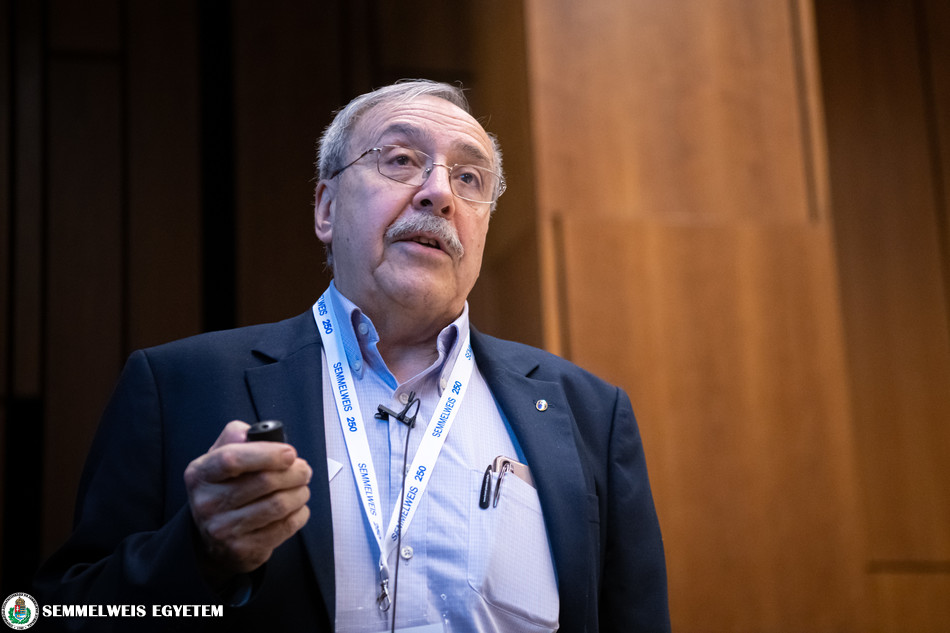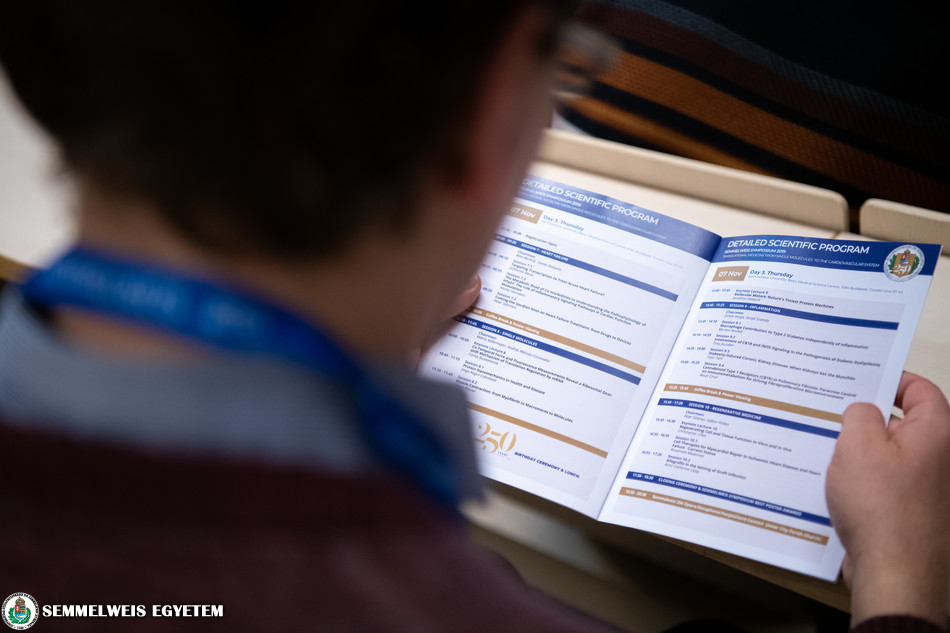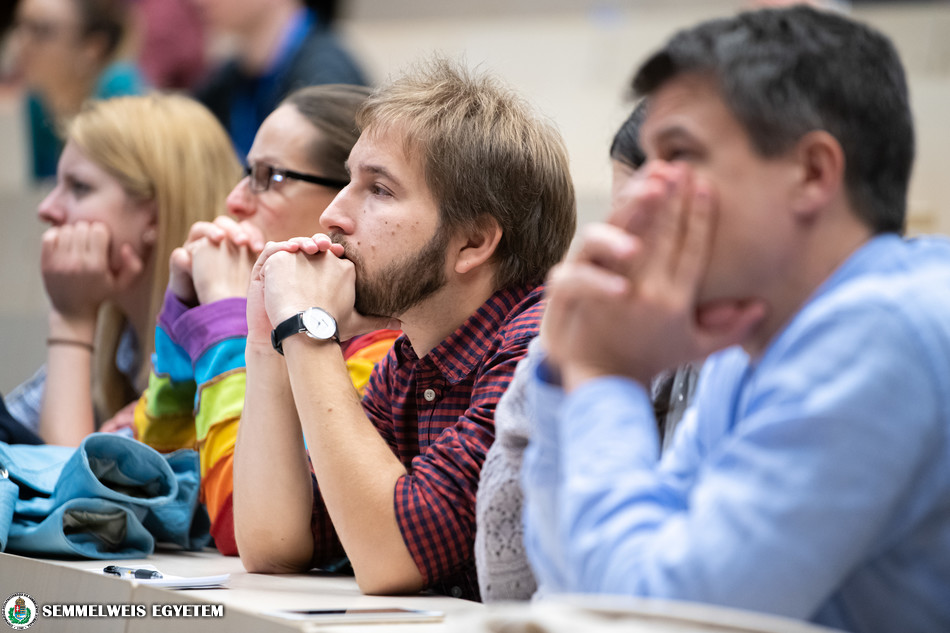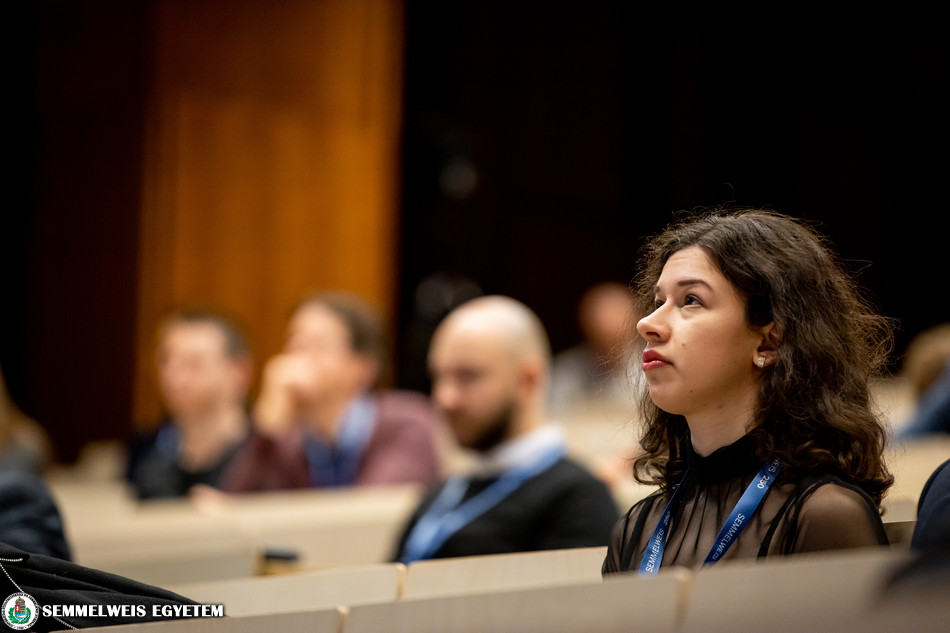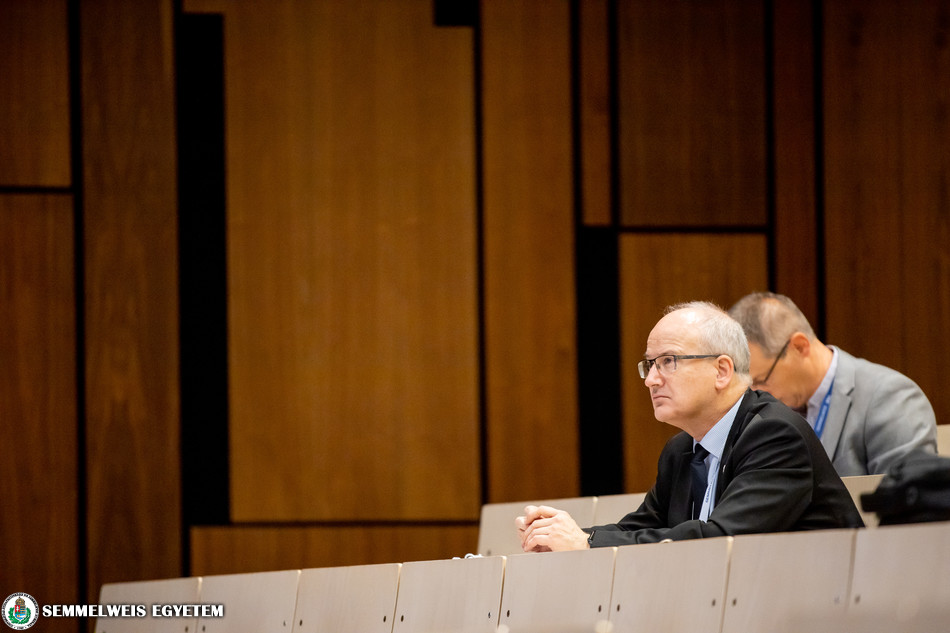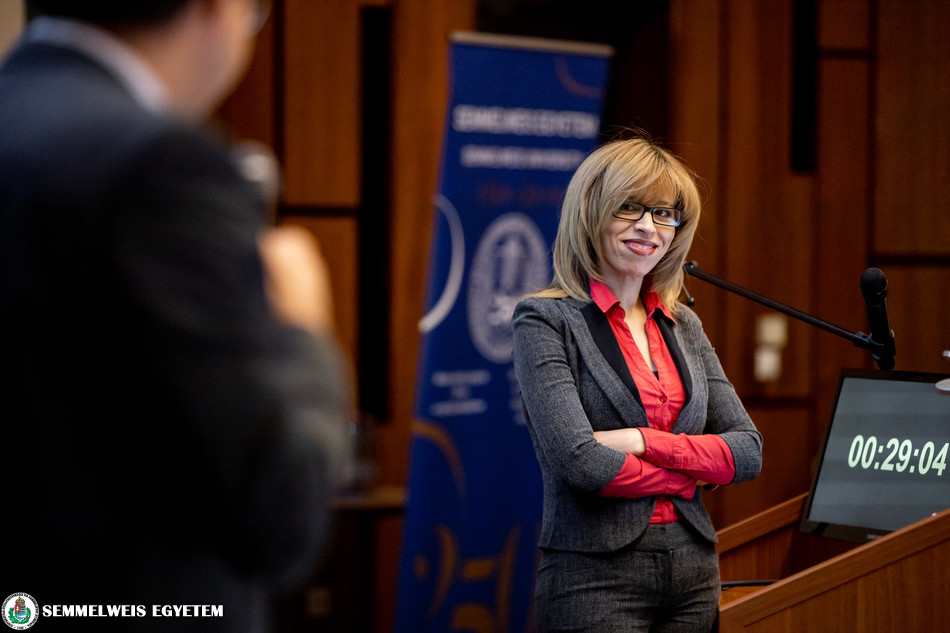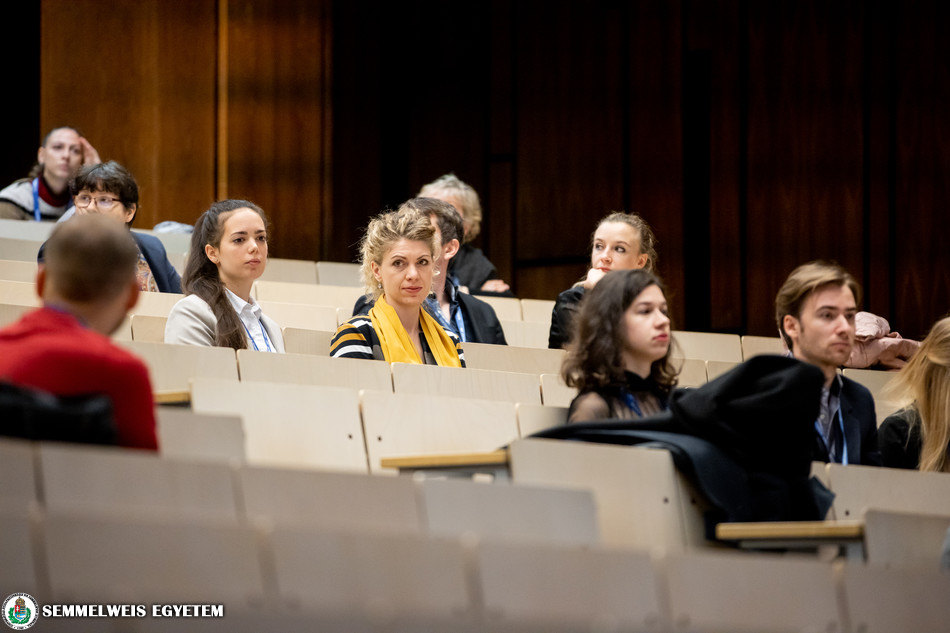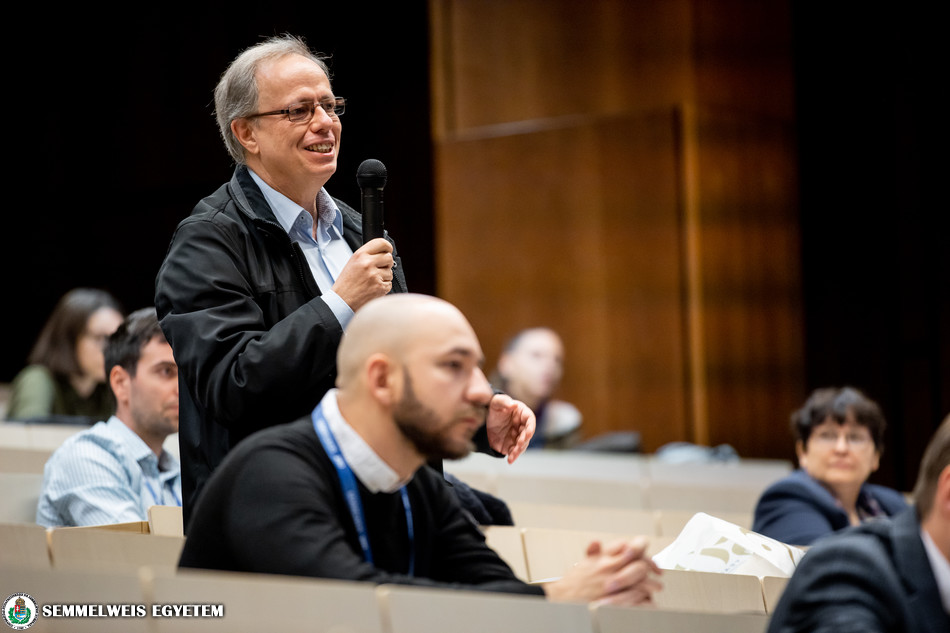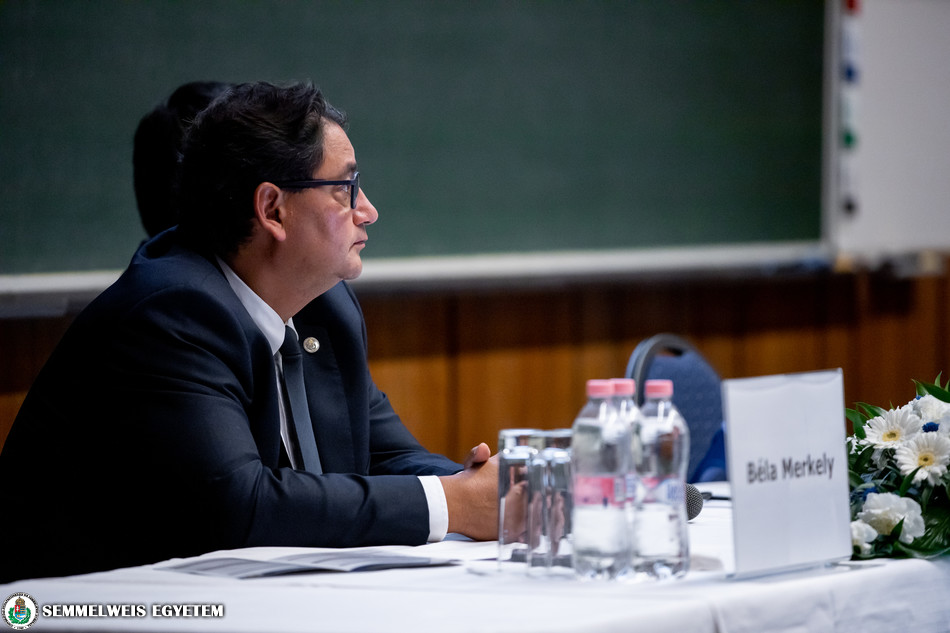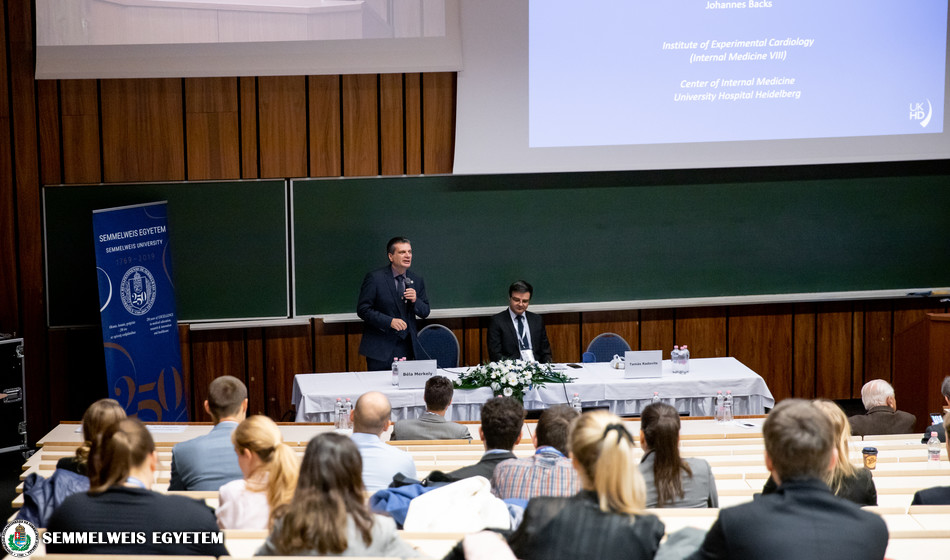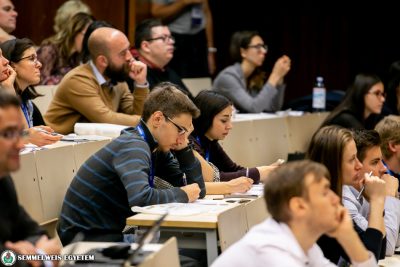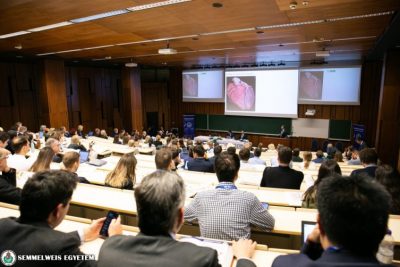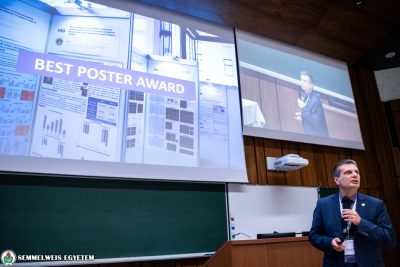The closing day of Semmelweis Symposium focused on molecular muscle research and translational research based on basic research focusing on heart failure, regenerative medicine, fibrotic conditions and the inflammatory aspects of cardiovascular comorbidities. 14 lectures were distributed among four sessions. Report by Dr. Zoltán Varga, senior research fellow of the Department of Pharmacology and Pharmacotherapy, one of the session leaders on Day 3.
The first session in the morning covered a number of topics related to heart failure. In his presentation, Professor Johannes Backs (University of Heidelberg, Germany) talked about the key role of inflammatory mechanisms in acute heart failure, presenting new therapeutic options for the treatment of Takotsubo cardiomyopathy and heart failure caused by sepsis.
The presentation given by Dr. Nazha Hamdani (Ruhr Bochum University, Germany) introduced the results of the study of a new clinical entity, heart failure characterized by retained ejection fraction. This disease occurs mainly in patients suffering from obesity and other comorbidities and no treatment has been found yet. Based on Hamandi’s findings, several factors, such as soluble guanylate cyclase, leading to inflammatory and oxidative tissue damage, may become new therapeutic targets in the targeted medicinal therapy of the future. The session’s closing presentation by Professor Petar Seferovic (University of Belgrade, Serbia) showed the links between the basic research results previously presented and the results of the latest clinical trials. According to his report, several new drugs appear to be promising in treating the various clinical manifestations of heart failure, highlighting the latest papers on the positive clinical effects of sacubitril/valsartan and SGLT2 inhibitors.
The second session focused on the study of molecular motor proteins and the contractile proteins of muscles from biophysical, molecular biological aspects and even on the level of individual molecules. The keynote lecture of Professor Carlos Bustamente (HHMI, United States) demonstrated the role of these proteins in fundamental processes, such as protein synthesis through precision studies of the biophysical parameters of individual motor proteins. Dr. Jorge Alegre-Cebollada (CNIC, Madrid, Spain) introduced the effects of oxidative protein modifications on the mechanical parameters of muscle contraction, which could greatly contribute to the understanding of both inherited and acquired cardiac conditions. Professor Dilson Rassier (McGill University, Montreal, Canada) gave a detailed report on the elementary biophysical studies of proteins involved in muscle contraction, which used techniques such as atomic force microscopy.
Following the celebration of the 250th anniversary of Semmelweis University’s foundation, Professor Jonathon Howard (Yale University, United States) gave a spectacular keynote lecture on the function of kinesin motor proteins and their role in physiology and pathophysiology.
The third session in the afternoon addressed the role of inflammatory mechanisms in cardiometabolic comorbidities. The presentation of Dr. Myriam Aouadi (Karolinska Institute, Stockholm, Sweden) highlighted the varied and central role of liver macrophage populations. The following three lectures of the session gave detailed accounts of the studies on the role of type 1 cannabinoid receptor, which plays a central role in metabolic diseases. Dr. Tony Jourdan (University of Burgundy, Dijon, France) proved that dyslipidemia causing atherosclerosis can be reduced by receptor inhibition during the formation of diabetic dyslipidemia. Dr. Yossi Tam (Hebrew University, Jerusalem, Israel), demonstrated the beneficial effects of receptor inhibition in diabetes-associated renal failure, while Resat Cinar (NIH, United States) found the inhibition of this pathway beneficial during the transformation and scarring of the lung’s connective tissue and introduced drug development in the field.
The final session of the Symposium discussed current issues of regenerative medicine. First, Dr. Christopher Chen (Boston University, United States) gave a keynote lecture on the recent developments in cardiovascular tissue generation, issues to be resolved and the future therapeutic applications of 3D tissue printing. Afterwards, Rosalinda Madonna (G. D`Annunzio University, Chieti, Italy) presented preclinical and clinical results in stem cell therapy. The closing presentation of the conference by Anne Lejay (Strasbourg, France) gave an introduction on her work in the field of vascular regeneration and the clinical problems of the use of vascular grafts.
Dr. Zoltán Varga
Photo: Attila Kovács – Semmelweis University
Video interviews: Tamás Deme, Eszter Keresztes
Translation: Ágnes Raubinek
